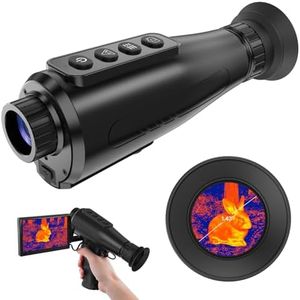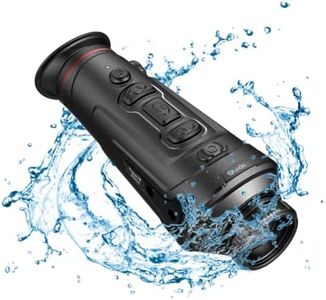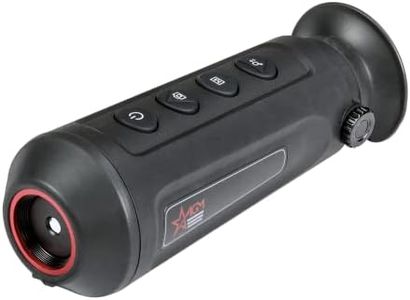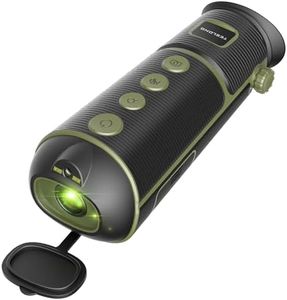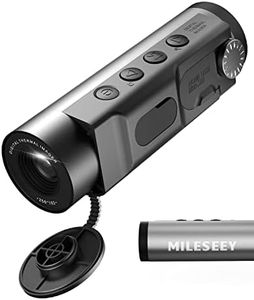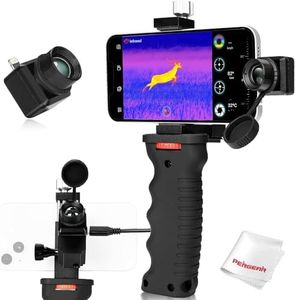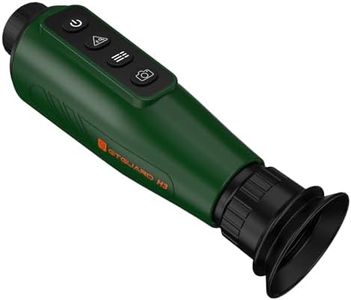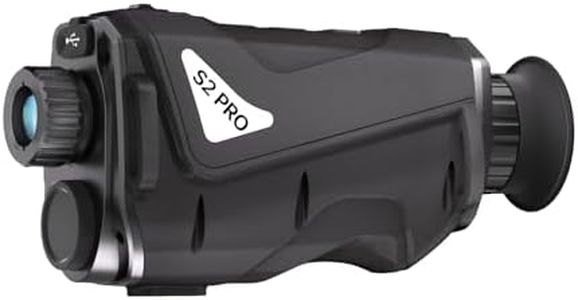We Use CookiesWe use cookies to enhance the security, performance,
functionality and for analytical and promotional activities. By continuing to browse this site you
are agreeing to our privacy policy
10 Best Thermal Monocular For Hunting
From leading brands and best sellers available on the web.Buying Guide for the Best Thermal Monocular For Hunting
Choosing the right thermal monocular for hunting can really enhance your experience outdoors. The right model helps you spot animals in total darkness, thick brush, or during bad weather by detecting heat signatures, rather than relying on visible light. Your choice should be guided by where and how you plan to use it, such as the types of environments you'll hunt in and the range you typically need. Understanding the key specifications will help you navigate all the models available and select the one that matches your needs best.ResolutionResolution in a thermal monocular refers to the number of pixels in the sensor that detects heat. It determines how detailed the thermal image will be. A higher resolution provides a clearer, more detailed view, making it easier to identify animals or objects, especially at greater distances. Monoculars typically come in low, medium, and high resolutions. Low resolution is usually suitable for close-range spotting or basic detection, while medium offers a balance for most general hunting needs. High resolution is best if you need crisp images for identification at longer distances. If you hunt in dense woods at short distances, lower resolution may be sufficient. For open fields, longer detection ranges, or if you want to clearly tell apart different animals, a higher resolution is a better fit.
Detection RangeDetection range is how far the thermal monocular can spot the heat signature of an object, such as an animal or person. This range varies based on the monocular's optics and sensor quality. Detection ranges can be roughly grouped into short (up to 500 yards), medium (500 to 1000 yards), and long (over 1000 yards). If you're hunting in dense forests or areas where shooting distances are short, a monocular with a short detection range will suffice. For bigger open spaces where spotting targets at a distance is important, choose one with a longer detection range.
Field of View (FOV)Field of View is how wide an area the monocular can display at one time, measured in degrees. A wider FOV shows more of the landscape at once, which is useful for scanning large areas quickly at short range. A narrower FOV often means better detail at greater distances. If you need to spot animals quickly in closer or wooded areas, go for a wider field of view. For long-range, focused observing, a narrower field of view is more suitable.
Refresh RateRefresh rate, measured in Hertz (Hz), is how often the image updates per second. A higher refresh rate gives smoother, less blurry images, especially when tracking moving animals. Lower refresh rates are fine for viewing still targets but could cause choppiness with motion. Common refresh rates are 9Hz, 30Hz, and 60Hz. If your hunting style involves tracking fast-moving targets, look for a higher refresh rate. For more static or slow hunts, a lower rate might be enough.
Battery LifeBattery life determines how long you can use the monocular in the field before needing to recharge or replace batteries. Battery life ranges from a few hours to more than 10 hours on a single charge, depending on usage and settings. If you go on long hunts or trips far from power sources, choose a model with extended battery life or replaceable batteries. For shorter, local outings, a shorter battery life might be acceptable.
Weight and SizeWeight and size affect how comfortable the monocular is to carry and use for long periods. Lighter, more compact models are easier to handle, especially if you hike long distances or want minimal gear. Larger models can offer better image quality or more features but may be heavier and bulkier. If portability is a main concern, pick a smaller, lighter device. If you prioritize image quality and features, a heavier monocular could be worth it.
Display TypeThe display type is the screen inside the monocular that shows the thermal image. Common types include LCD and OLED. OLED displays often offer better contrast and deeper blacks, which can help with long-term comfort and image clarity, especially in low light. LCDs can still provide clear images but may be less comfortable for prolonged viewing. If you plan to use the monocular for long periods or in low light, consider a model with an OLED display.
